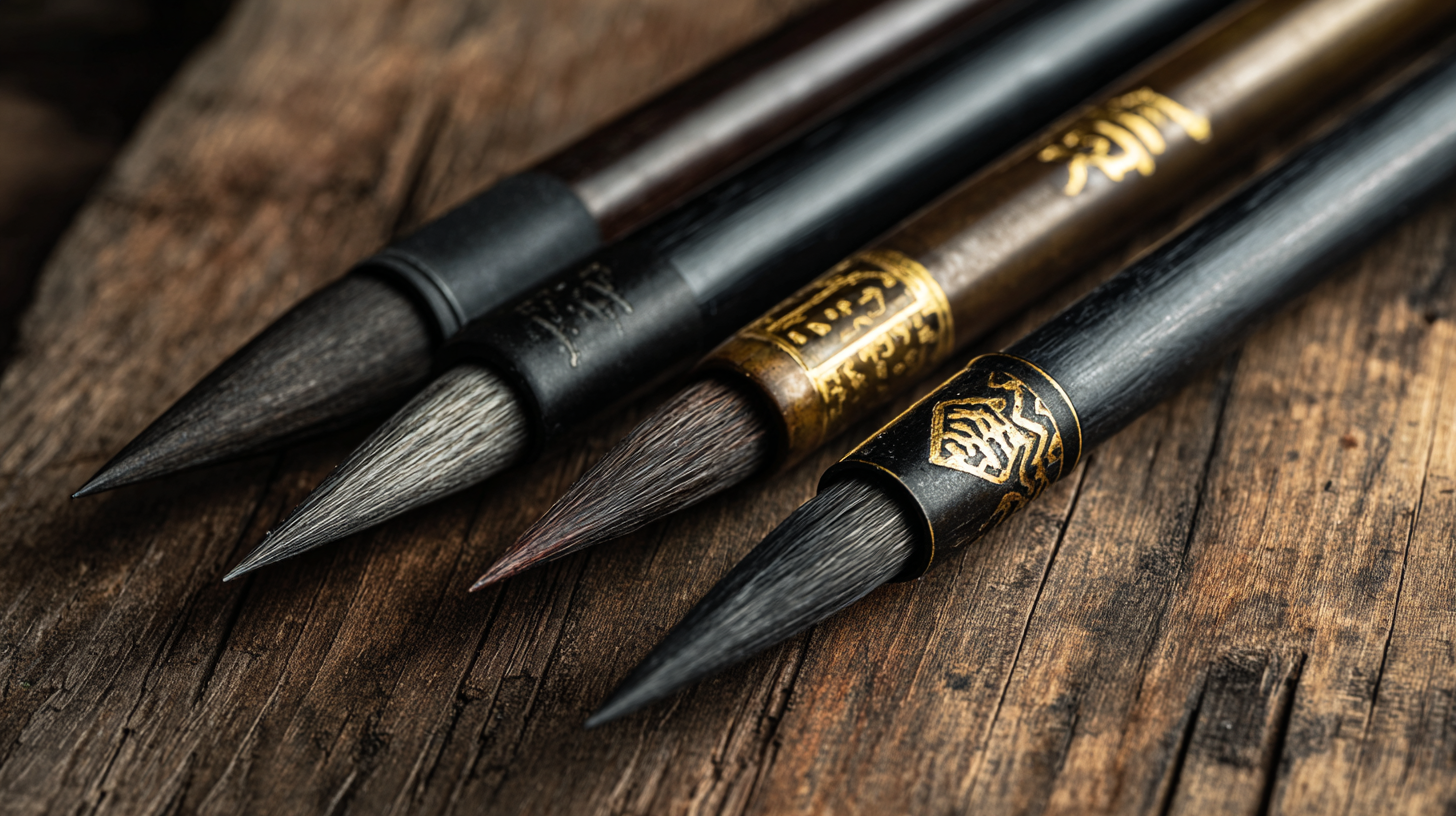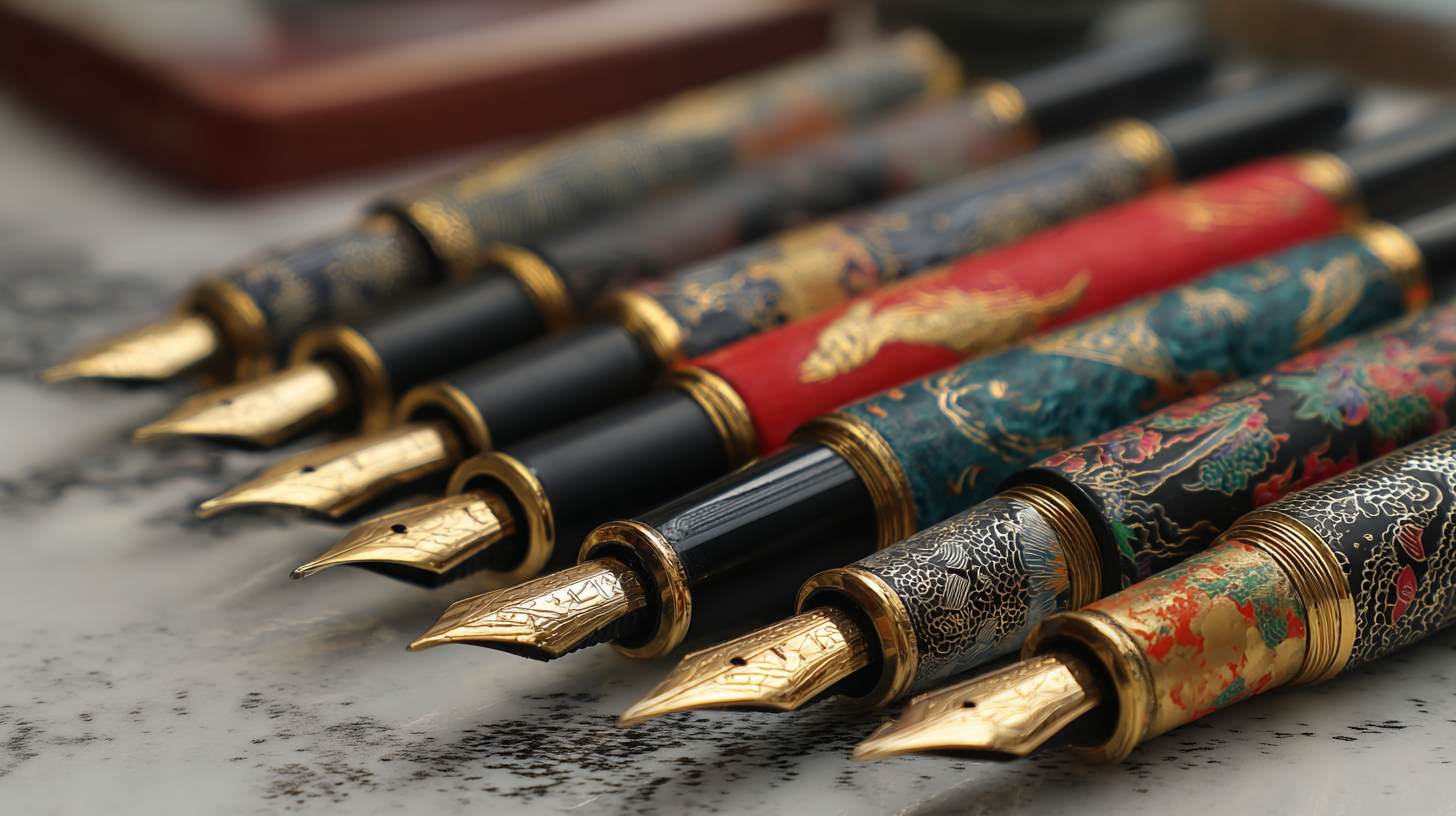In the realm of global manufacturing excellence, the significance of precision and artistry cannot be understated, particularly when it comes to tools like Chinese Calligraphy Pens. A recent report by the International Association of Writing Instruments indicates that the global market for writing instruments, including specialty pens, is projected to reach $25 billion by 2025, with increasing demand for high-quality writing tools in both educational and artistic contexts.

Chinese Calligraphy Pens, recognized for their exquisite craftsmanship and intricate design, play a pivotal role in this sector, blending tradition with modern manufacturing techniques. As manufacturers worldwide seek to enhance their product lines and cater to the growing interest in cultural arts, the integration of such specialty pens into global supply chains is paramount. The potential to elevate manufacturing standards while honoring centuries-old techniques presents an unparalleled opportunity for industry leaders to innovate and excel.
 Chinese calligraphy pens are not just tools for artistic expression; they are surprisingly influential in the realm of global manufacturing standards. According to a 2022 report by the International Journal of Manufacturing Technology, Chinese manufacturers have significantly improved their production processes and quality control by adopting precision crafting techniques inspired by traditional calligraphy. The meticulous nature of calligraphy emphasizes the importance of detail and accuracy, qualities that are essential in manufacturing. This cultural art form has contributed to a rise in quality assurance measures, pushing companies towards excellence.
Chinese calligraphy pens are not just tools for artistic expression; they are surprisingly influential in the realm of global manufacturing standards. According to a 2022 report by the International Journal of Manufacturing Technology, Chinese manufacturers have significantly improved their production processes and quality control by adopting precision crafting techniques inspired by traditional calligraphy. The meticulous nature of calligraphy emphasizes the importance of detail and accuracy, qualities that are essential in manufacturing. This cultural art form has contributed to a rise in quality assurance measures, pushing companies towards excellence.
Tips for manufacturers looking to improve their standards include embracing the principles of attention to detail found in calligraphy. By integrating techniques that prioritize precision and meticulousness, businesses can enhance their quality control processes. Furthermore, investing in high-quality tools—similar to the best Chinese calligraphy pens—can result in better craftsmanship, leading to higher consumer satisfaction and compliance with global standards.
Moreover, as the global market becomes increasingly competitive, manufacturers leveraging the historical and cultural significance of calligraphy within their practices can differentiate their brands. This unique approach not only elevates product quality but also aligns with consumer demand for authenticity and craftsmanship, showcasing the timeless connection between art and industry.
The calligraphy pen industry in China has seen significant advancements, reflecting a broader trend in quality manufacturing across various sectors. According to recent market reports, the global writing instruments market was valued at approximately USD 17.4 billion in 2024, with a projected compound annual growth rate (CAGR) of 6.1% between 2025 and 2034. This growth signals an increasing consumer preference for high-quality writing instruments, including luxury calligraphy pens that exemplify craftsmanship and precision.
Chinese manufacturers are harnessing cutting-edge technologies and traditional craftsmanship to elevate their calligraphy pen offerings, thereby establishing a robust global footprint. The focus on quality not only meets rising global demand but also positions China's calligraphy pen industry as a leader in sustainable and innovative production practices. As the market for luxury writing instruments expands, driven by refined consumer tastes, the emphasis on quality and artistry in Chinese calligraphy pens will be pivotal in shaping future industry dynamics.
| Manufacturing Metric | Value | Year |
|---|---|---|
| Total Production Volume (Million Pens) | 12 | 2023 |
| Export Volume (Million Pens) | 8 | 2023 |
| Market Growth Rate (%) | 10 | 2023 |
| Number of Manufacturers | 150 | 2023 |
| Average Production Cost per Pen ($) | 0.50 | 2023 |
| Quality Assurance Certification (%) | 85 | 2023 |
 Chinese calligraphy pens, renowned for their craftsmanship and cultural significance, are essential tools for artists and writers alike. High-quality calligraphy pens possess distinct characteristics that contribute to their superior performance. They typically feature flexible bristles made from animal hair, allowing for a range of stroke widths and fluidity. The body, often crafted from bamboo or other fine woods, not only provides balance but also enriches the user experience with its tactile aesthetic. The ink reservoir design also plays a crucial role, ensuring a steady flow that is crucial for achieving those intricate brushstrokes.
Chinese calligraphy pens, renowned for their craftsmanship and cultural significance, are essential tools for artists and writers alike. High-quality calligraphy pens possess distinct characteristics that contribute to their superior performance. They typically feature flexible bristles made from animal hair, allowing for a range of stroke widths and fluidity. The body, often crafted from bamboo or other fine woods, not only provides balance but also enriches the user experience with its tactile aesthetic. The ink reservoir design also plays a crucial role, ensuring a steady flow that is crucial for achieving those intricate brushstrokes.
Tips for selecting a high-quality Chinese calligraphy pen include assessing the brush's bristle quality and flexibility. Look for pens with varied hair types, as these can produce different effects. Additionally, consider the weight and grip of the pen; a well-balanced pen is essential for extended writing sessions without discomfort. Finally, don’t underestimate the importance of the ink quality. Premium inks not only produce vibrant colors but also offer better adhesion and longevity on various paper types, enhancing the overall output of your calligraphy work.
The global demand for Chinese calligraphy pens is steadily increasing, driven by a burgeoning interest in traditional art forms and cultural expression. According to industry predictions, the marker pen market size is expected to reach $597 million in 2023, with a compound annual growth rate (CAGR) of 6.6% from 2024 to 2032. This growth is largely attributable to an increasing number of students and professionals seeking quality writing instruments, including calligraphy pens, to enhance their craft.
With the global stationery market projected to grow to 11,883 billion RMB by 2025, achieving a CAGR of 4.6%, it is evident that the calligraphy sector is riding the wave of this trend. Chinese calligraphy pens, imbued with rich cultural heritage and craftsmanship, are becoming increasingly sought after not only in China but also abroad. Consumers are drawn to these pens not just for their functionality but also for their aesthetic value, making them a unique fusion of art and utility.
**Tips for Enthusiasts:**
1. Experiment with different brush sizes and inks to find the combination that suits your style best.
2. Join online communities or workshops focused on calligraphy to gain insights and share techniques with fellow enthusiasts.
3. Regular practice is essential—set aside time each week to hone your skills and explore various styles of Chinese calligraphy.
In the realm of Chinese calligraphy, innovative manufacturing techniques are reshaping how calligraphy pens are produced, merging traditional craftsmanship with modern technology. The Chinese education system, known for fostering creativity and technical skills, plays a vital role in this transformation. As students excel academically and adopt inventive approaches, they contribute significantly to refining the production processes within the calligraphy pen industry.
Moreover, China's commitment to becoming a leader in various technological fields, including artificial intelligence and biotechnology, further enhances its manufacturing capabilities. By integrating cutting-edge technologies into calligraphy pen production, manufacturers can improve quality, enhance design, and optimize material use. This synergy of education, innovation, and traditional artistry not only ensures the excellence of Chinese calligraphy pens but also positions China as a beacon of progress in global manufacturing.
